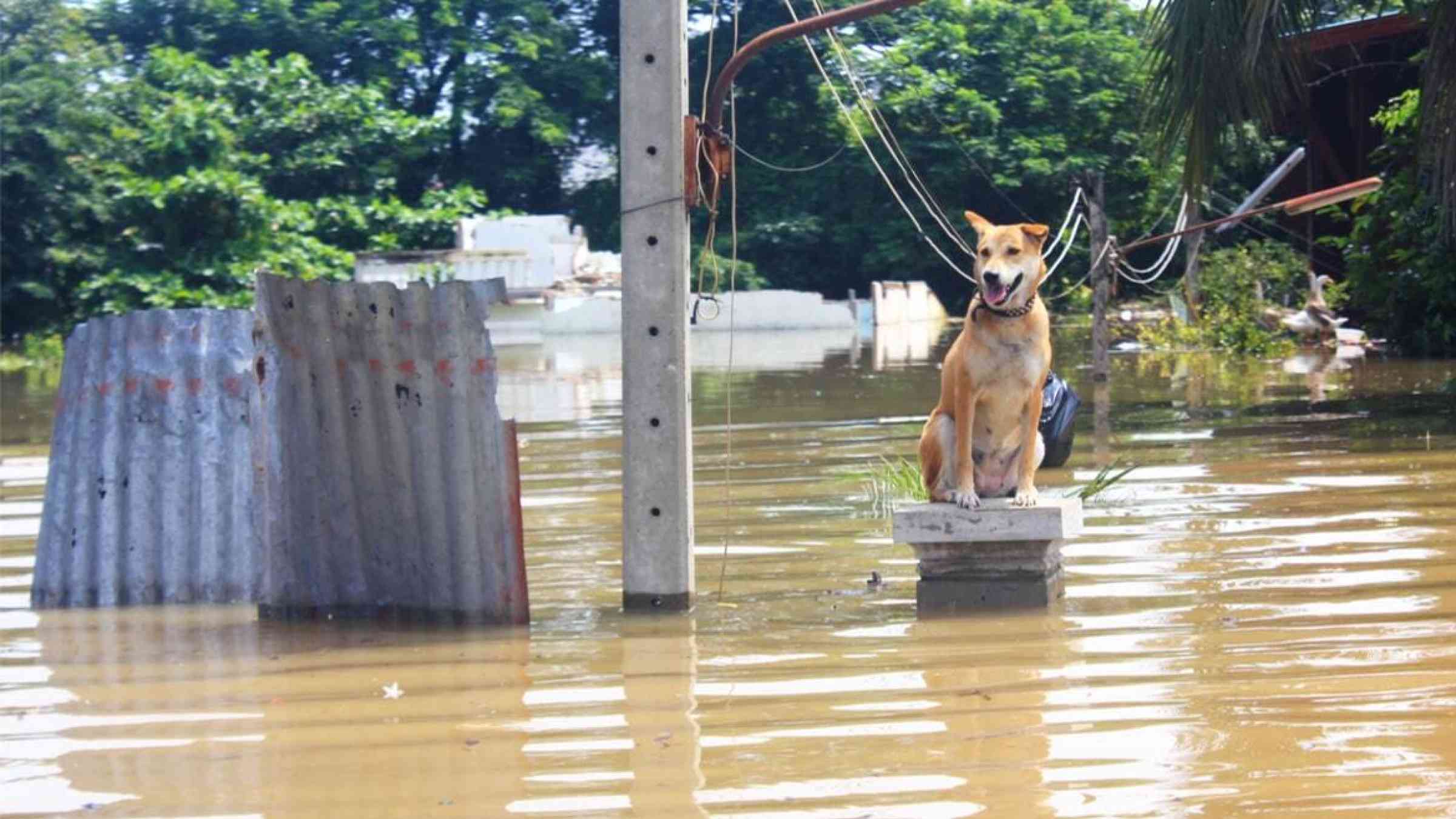Animals, disasters, and marginalised groups

Marginalised groups – those that sit on the margins of society even before a disaster – often experience greater losses and impacts during and after a disaster. The most at-risk groups are more likely to have reduced capacities and resources to respond to, and recover from, disasters or emergencies.
For many, the limited capacities and resources that they possess are in the form of animals, whether they are assistance animals for those with additional needs (both physical and mental health-related) or livestock (as many marginalised groups rely on small farm holdings and livestock to provide their livelihoods).
A vital resource and support system
During times of disaster, marginalised peoples’ reliance on animals becomes even more acute.
Many marginalised communities face reduced access to resources and aid, making the pre-emptive establishment of support systems all the more important for policymakers, disaster practitioners and others to recognise and consider during their own work. This must include the support provided by animals.
Research by Lauren Carrick, conducted during her internship with DRR Dynamics as part of her Master’s course at King’s College London, suggests that a lack of consideration on this specific issue, with most policy and research containing only brief mentions, if any, of the importance of animals for marginalised groups during and after disasters. Indeed, her research found that whilst the Sendai Framework for Disaster Risk Reduction does reference working animals (paragraphs 30(p) & 31(f)), there are limited examples of this being carried through to national disaster management policies.
Similarly, assistance animals are often excluded from policy and official plans for disaster response and recovery. Our report highlights a number of examples of this, including assistance animals being barred from emergency shelters. For those who rely on their support, this lack of consideration can worsen an already stressful and dangerous situation.
Recommendations
The report ‘Animals, disasters & marginalised groups’ provides a number of recommendations for policymakers, practitioners and other DRR professionals on how to recognise, acknowledge and respond to people who rely on animals during and after disasters:
- Animals are a multivalued resource for marginalised and vulnerable people, and their role extends beyond their economic value to have indirect impacts on social spheres and wellbeing for communities. Policymakers need to develop a better understanding of this role in order to place greater emphasis on productive assets within the Sendai Framework, and acknowledge the cumulative, beneficial effects of animal ownership amongst the most marginalised in society. Indicators are needed to measure and recognise damage to and loss of animals (both livestock and service animals), and the impacts of this on recovery.
- We need to develop proof of ownership mechanisms, and capacities to claim on animals lost as the result of disasters, ensuring that policies are inclusive of marginalised groups. Policies must recognise different livelihood options, social limits on documentation, and issues of trust and distrust.
- People with nomadic livelihoods are especially vulnerable, with deep interconnections with their animals, and more investment is needed for nomadic groups and animal care. Sustainable livelihood options should address this interconnectedness in risk and recovery in order to reduce post-disaster recovery costs.
More research into human-animal interdependence in the context of disaster risk reduction and marginalised groups is needed; the findings from such research must then be factored into DRR policy to ensure that we leave no-one – or the animals around whom their lives are built - behind.
Kevin Blanchard is the Director of DRR Dynamics, a research organisation focused on ensuring the inclusion and empowerment of marginalised groups in disaster risk reduction (DRR). He has over 14 years’ experience in developing inclusive DRR policy for national governments, international agencies and NGO’s.
Editors' recommendations
- Animals, disasters and marginalised groups
- Cultural factors in livestock emergency management
- Animals in disasters: Case studies: Turrialba
- Smallholder farming systems in the Indian Himalayas: Key trends and innovations for resilience
- Farm animals suffered in B.C. floods despite existing disaster management guideline